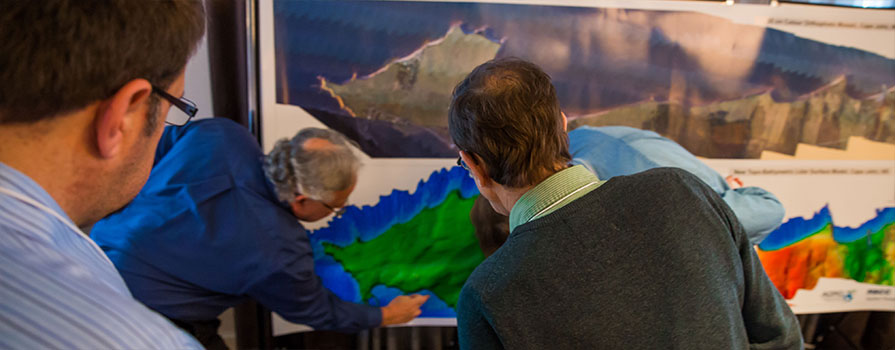Recipients of collaborative R&D funding

Through a new Natural Sciences and Engineering Research Council of Canada (NSERC) grant, colleges across the country are teaming up and combining their individual research strengths and leading technologies to help Canadian businesses seize new opportunities. Nova Scotia Community College (NSCC) is thrilled to be the recipient of two such Applied Research and Technology Partnership (ARTP) grants.
Tri-college partnership targets R&D in wild and farmed kelp.
A group of three regional colleges will work together to assess kelp environments in Atlantic Canada and address opportunities to grow the market for this marine plant through responsible and sustainable practices. NSCC Research Scientist, Dr. Timothy Webster, explains the unique role that each college will take on as part of this $1.98-million-dollar project:
“The team at the Applied Geomatics Research Group is very excited to get started on this ambitious and challenging project to test our topo-bathymetric lidar technology to map and quantify natural and farmed kelp. We’ve partnered with PEI-Holland College’s Canada’s Smartest Kitchen to develop snack products from the kelp, which is high in nutrients, and some say, ‘is the new kale.’ The College of the North Atlantic in Newfoundland will use our mapping results and machine learning to predict where kelp should grow best.”
This research is essential in providing information to aquaculture farmers that are moving beyond seafood to target kelp. Natural kelp beds are in different states of health around Atlantic Canada. The first step is knowing where they are and how much kelp we have.
“We know from a previous project with Acadian Seaplants, that our mapping technique of using a green laser fired from an aircraft, can successfully quantify submerged vegetation like kelp,” says Webster. “We will be flying our topo-bathymetric lidar sensor in Nova Scotia and in Newfoundland over the next two years to collect and process data that will hopefully address these questions.”
Student involvement and project outcomes.
This project will provide tangible outcomes, such as a near-shore interactive data and 3D visualization map to inform business expansion and more efficient operations. On the scaling-up commercialized food products side of things, sensory-tested prototype recipe formulations and marketing intelligence will be shared with industry.
Over the two-year project duration, around 50 students will gain experience in the areas of research planning, industry collaboration and execution, both individually and through cross-institutional multidisciplinary engagement.
Building future generations of innovators to solve resource management challenges.
Information Technology (IT) is rapidly transforming how economies perform and how resources are managed. As this digital transformation occurs, the planet is also facing unprecedented challenges in climate change. The College recognizes that our communities hold many forms of knowledge that reach beyond technology, described by Mi’kmaw Elder Albert Marshall as Two-Eyed Seeing - the wisdom of combining Indigenous knowledge and western science to benefit all.
The second ARTP grant awarded to NSCC will be focused on how Information Technology can build a bridge to sustainable innovation by enabling multiple perspectives. Director of Applied Research, Dr. Alain Joseph explains how teams will use the Two-Eyed Seeing approach as a guiding framework:
“Working alongside community partners, we’re going to look at how IT can combine with natural systems knowledge from scientific and Indigenous perspectives to support economic opportunities and long-term stewardship of resources.”
This funding will help build partnerships that strengthen equity, diversity, and inclusion through applied research that will have meaningful impacts for partners.
